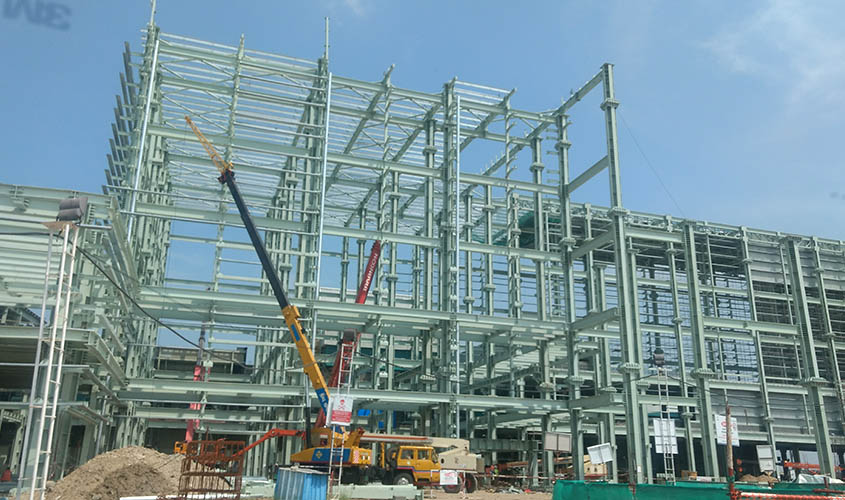As for the housing sector, the Steel Ministry plans to provide affordable homes made of steel which are cost-effective and more durable.
The Ministry of Steel has asked steel PSUs such as Steel Authority of India (SAIL) and Rashtriya Ispat Nigam Limited (RINL) to improve on their marketing strategies to project steel as a construction material better than cement or plastic, with an aim to boost domestic consumption of the alloy.
The ministry is trying hard to convince its counterparts handling infrastructure sectors such as surface transport, housing and railways by highlighting the merits of using steel and slag in constructing bridges, roads and buildings.
The life of a steel bridge is 80 to 100 years, while the concrete one needs a complete overhaul in 40 to 50 years, it says. It also takes half the time to erect a steel bridge compared to their concrete counterparts. Studies have shown that steel slag is a better material than others for road construction.
The Transport Ministry has formed a task force to look into the matter.
India is one of the world’s largest steel producers and the sector has been a major contributor to the country’s manufacturing output. But the industry is facing problems for the last couple of years owing to a number of reasons, mainly cheap imports and low domestic consumption.
As for the housing sector, the Steel Ministry plans to provide affordable homes made of steel which are cost-effective and more durable.
It has prepared prototypes of steel which cost less than Rs 2 lakh a unit and are three times more durable than the present structure. The ministry has even prepared prototypes of affordable house for the Rural Development Ministry. Though Railways has been using steel in building bridges across rivers and tough terrain for more than a century now, the Steel Ministry wants them to use it also in the construction of small culverts etc and even station buildings and
platforms.
The drawback of concrete is its low ductility and resistance against vibrations. It’s brittle in nature and has low fatigue value in comparison to steel, the ministry explains.
Though use of steel may push the cost up by 10% to 15%, the steel ministry’s point is that the longevity factor would make up for the extra cost in the long run, ultimately benefiting all stakeholders.
SAIL has embarked on a campaign, “SAIL Structurals: The Future of Steel Design” to drive the point home. “Structurals” are the steel products with applications in structures such as angles, beams, channels and sections going into the invisible skeleton of huge structures. The steel major has been producing these structurals since 1960s.
The initiative aims at further promoting the structurals that are one of the primary inputs in any kind of construction project worldwide. There is a growing need for them in the infrastructure sector where specialised beams, angles, flanges and joists are required to complete projects more efficiently in terms of design, construction time, strength and cost.
Speaking to The Sunday Guardian, SAIL director Soma Mandal said, “Continuous innovation is going on to make structures in all areas smarter and ever more user friendly. Use of steel has become inevitable in gigantic, multi-storied constructions like residential projects, commercial spaces, sports complexes and transport infrastructure like airports, flyovers, bridges, sea-links, industrial buildings, hospitals, hotels and metro lines.”
SAIL is now producing more customised grade structurals like SAILMA, seismic resistant grade and corrosion resistant steel at its Durgapur and IISCO steel plants.
Its parallel flanges score over the conventional fabricated beams in terms of product flexibility, mechanical efficiency, ease of fabrication, speed of construction, product quality and cost effectiveness.
Mondal said that the steel major has envisaged a three-pronged strategy focusing on effectiveness of sales force, market development and market-oriented production to give a massive boost to sales and marketing of the smart structural under the brand name NEX. She said with the government developing 100 smart cities, use of the alloy will be economical due to low life cycle cost and give these cities a strong and sustainable foundation.
“As part of the initiative, we will organise seminars on the subject across the country to be attended by architects, designers, consultants, project owners, infrastructure development companies, business owners, government representatives and customers,” she added.
The Maharatna PSU is also exploring the possibility of getting the popular designing software used by most designers in India to include its structurals in their programmes.

